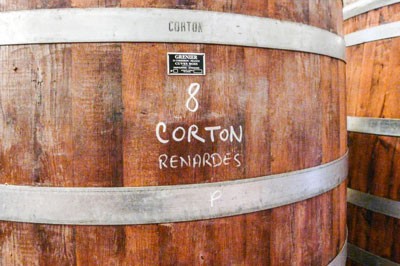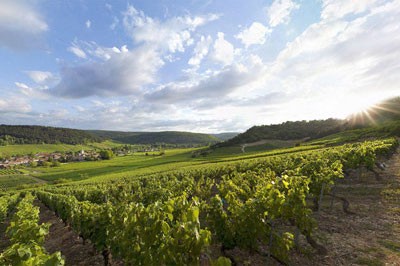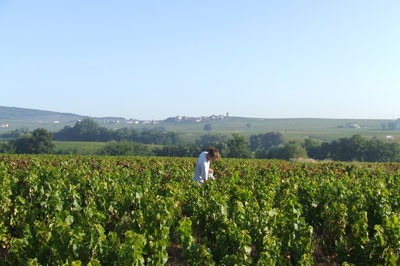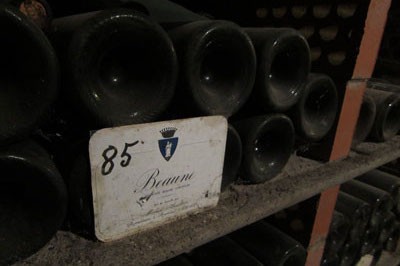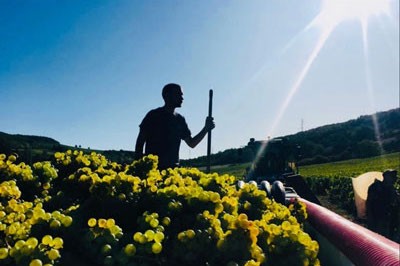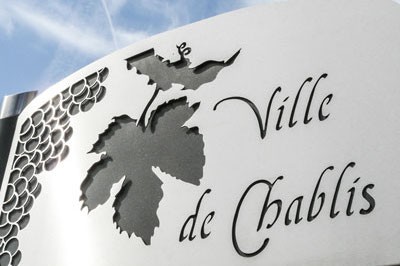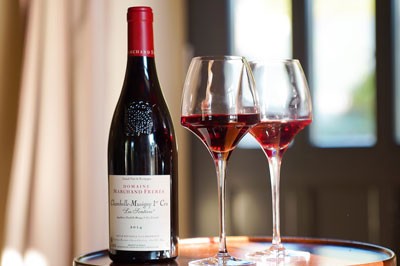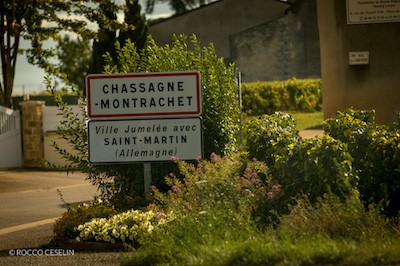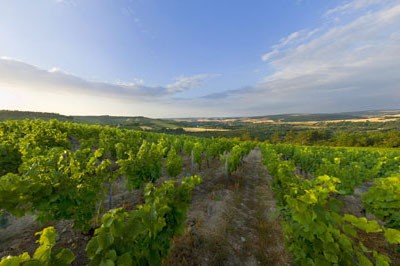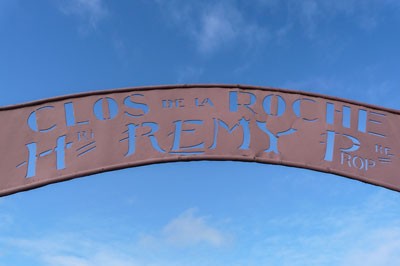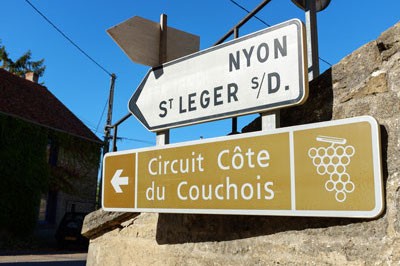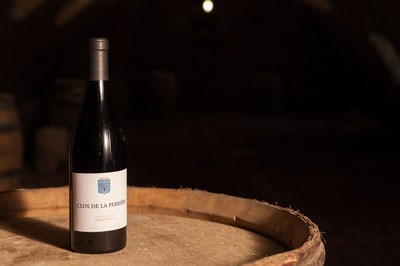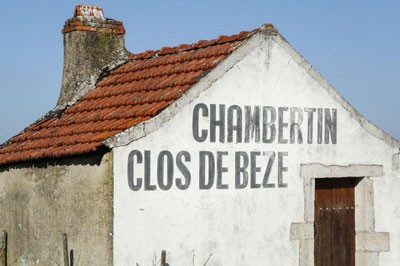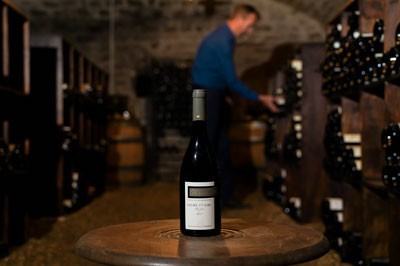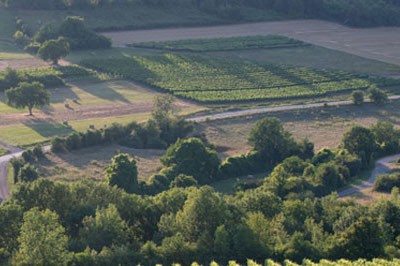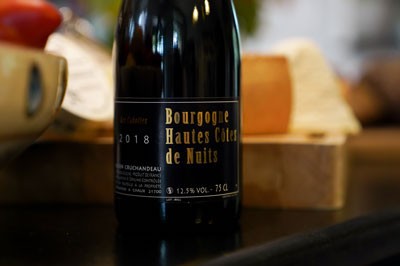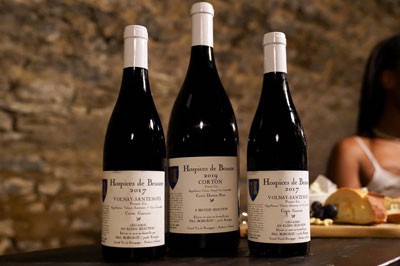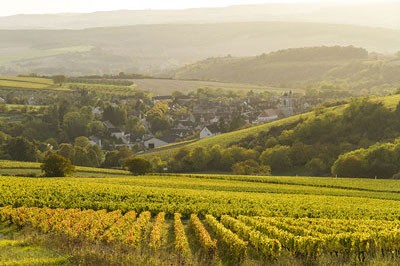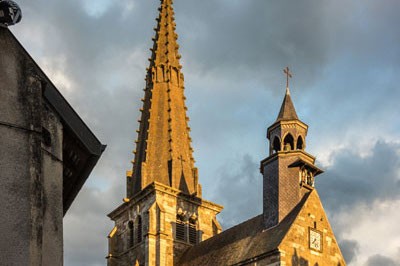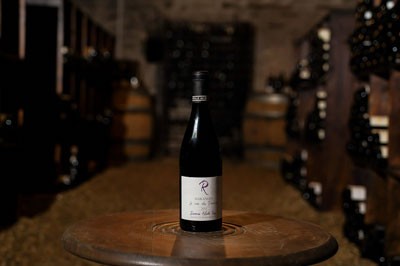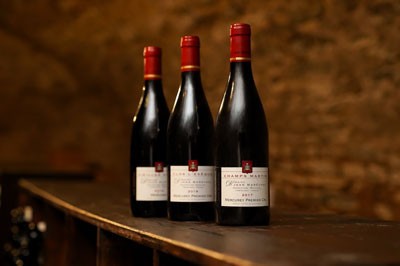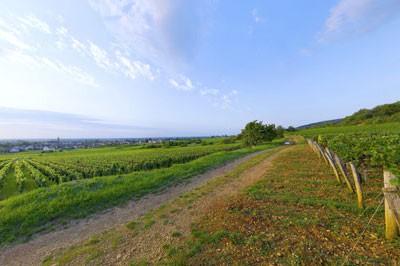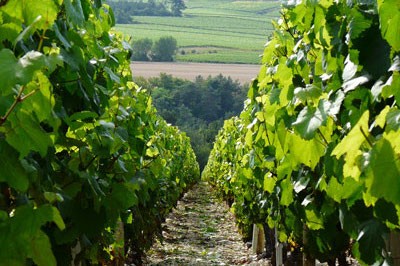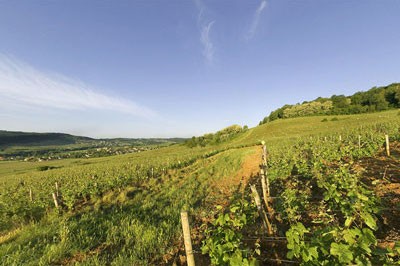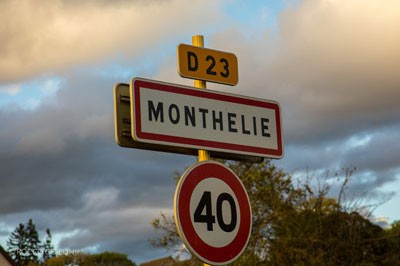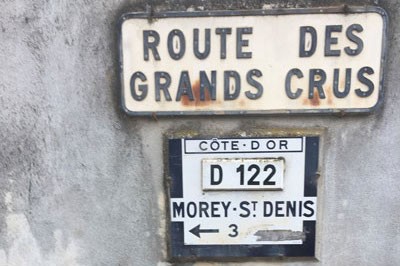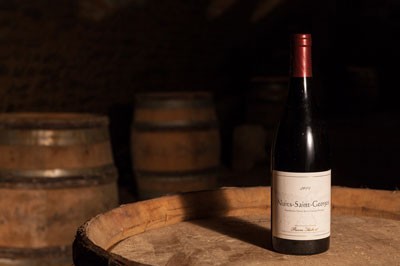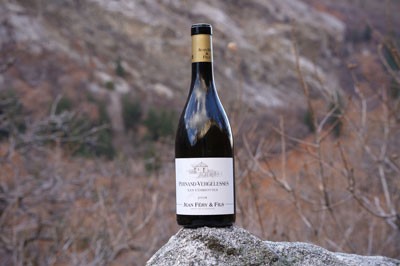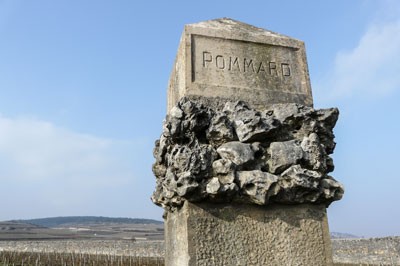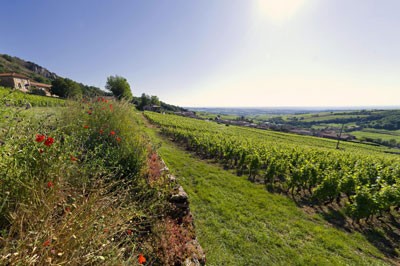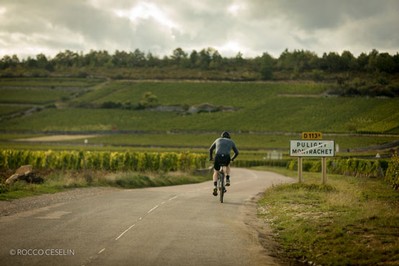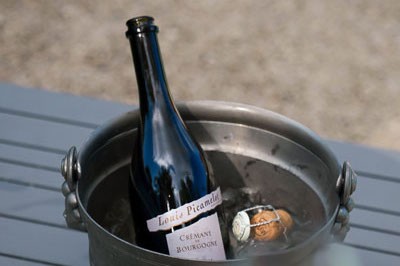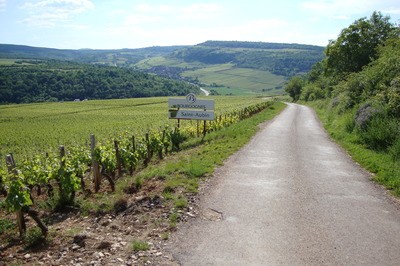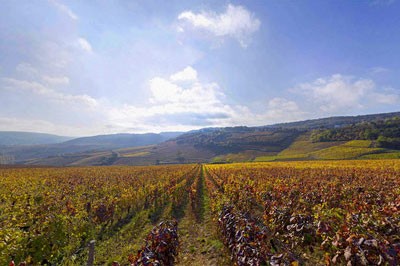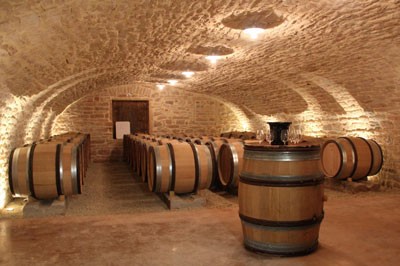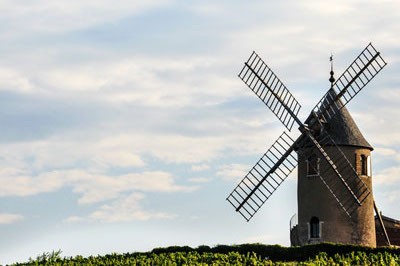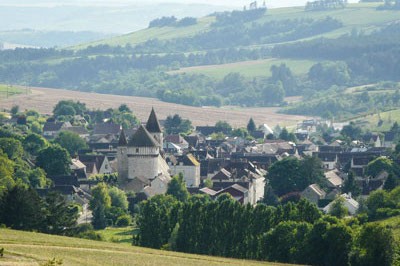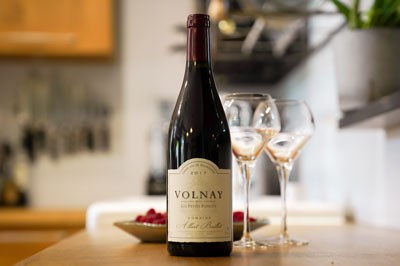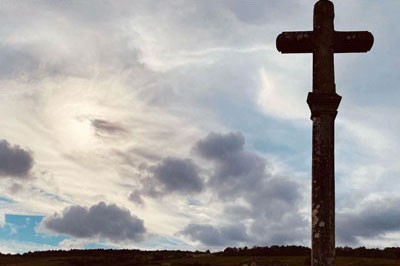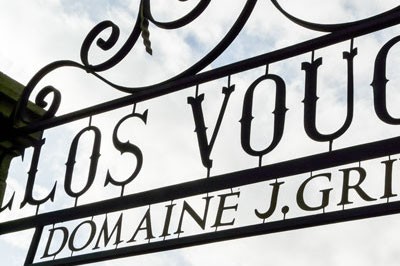TOP
Read about the Villages and Appellations of Burgundy. At burgundywine.com, we carry wine from these forty or so as well as another 23 Appellations. We focus on a few 'lesser Appellations' and a few 'up and coming' Appellations to draw your attention to what burgundywine.com is all about: hidden producers; 'hidden gems'...
Villages & Appellations:
Aloxe-Corton | Auxey-Duresses | Beaujolais | Beaune | Bourgogne | Bouzeron | Chablis | Chambolle-Musigny | Chassagne-Montrachet | Cote d’Auxerre | Cote de Nuits | Côtes du Couchois | Fixin | Gevrey-Chambertin | Givry | Hautes-Côtes-de-Beaune | Hautes Cotes de Nuits | Hospices de Beaune | Irancy | Ladoix | Maranges | Mercurey | Marsannay | Meursault | Montagny | Monthelie | Morey-St-Denis | Nuits-St-Georges | Pernand-Vergelesses | Pommard | Pouilly-Fuissé | Puligny-Montrachet | Rully | Saint Aubin | Saint Romain | Saint-Veran | Santenay | Savigny-les-Beaune | Volnay | Vosne-Romanee |
At burgundywine.com we spend a lot of time seeking out what we call hidden gem winemakers. We often think of the wines as hidden gems but many of our winemakers are hidden gems too! These winemakers are often found in lesser appellations. And by lesser, we mean lesser in renown, not quality. Check out our blog on this topic: On the 'Lesser Appellation' trail - the road to hidden Burgundy gems.
Lesser known Appellations:
IRANCY | MERCUREY | AUXEY-DURESSES | LADOIX | MONTHELIE
Up and coming Appellations:
MARANGES | BOUZERON | CÔTES DU COUCHOIS | RULLY | GIVRY
The village of Aloxe-Corton (pronounced "Alosse") was first mentioned as far back as 696 and is the natural geological link between the regions of Côte de Nuits and Côte de Beaune. It is dominated by the great Corton Hill. The AOCs of Ladoix-Serrigny and Pernand-Vergelesses share the hill alongside Aloxe-Corton, with some overlap in classification.
Being situated in a side-valley of the Côte de Beaune means that the climate of Auxey-Duresses is quite cool, producing a different style of Burgundy than other warmer regions. The wines are slightly shorter-lived than those of nearby Volnay, meaning there are often bargains to be had with them. The village also faces a secondary challenge—from the difficulty most foreigners find in pronouncing it (for the avoidance of embarrassment it is ‘Aussey’).
Despite the fact that it has a completely different soil make-up, uses a totally different grape variety (Gamay), and is in reality not in Burgundy at all, Burgundians have always had a soft spot for Beaujolais. Although administratively a part of Burgundy (located to its North), Beaujolais has a climate more akin to the Rhône region, which overlaps its southern flank.
Names mean a lot here, and in the commune of Beaune, considered the wine capital of Burgundy, there is no shortage of them. There are some fabulous smaller producers to get to know – usually a great way of discovering both quality and value. The appellation Beaune includes an astounding 42 Premier Crus produced within the commune of Beaune itself.
When it comes to the wines of the small village of Bouzeron in the Côte Chalonnaise, in northern Saône-et-Loire, you find you are quite literally looking for gold – for here, unlike almost anywhere else in Burgundy, they grow Aligoté grapes which ripen into doré Aligoté – golden Aligoté. The skin of these grapes is very fine and has a lustre which hints at its value.
Chablis has a lot to offer; it is a beautiful region, producing some extraordinary and highly unique wines. It is a semi-continental region angled off to the north west of Burgundy (with the village of Chablis at its centre). This northerly location is the reason for the lean, dry, acidic nature of Chablis wine.
Chambolle, one of the prettiest villages in the Côte de Nuits, takes its name rather dramatically from the French words ‘champ bouillant’ meaning ‘boiling or bubbling field’. This isn’t a reference to any unusually hot climate, but instead refers to the torrential floods which can flow down nearby hillsides after heavy rainfall. But for our purposes, we’re more concerned with the flow of a different liquid also seen in large quantities in these parts – superb Burgundy wines.
In the very south of the Côte de Beaune, Chassagne-Montrachet is one of the triumvirate in the 'golden triangle’ of white Burgundy (with Puligny-Montrachet and Meursault). The broad hillside that it shares with Puligny brings out an extraordinary expression of both Pinot Noir and Chardonnay. In Chassagne, they are grown side by side, such is the complexity of the terroir.
In the far north of Burgundy lies the city of Auxerre. In the surrounding environs are seven communes which produce wines under the Cote d’Auxerre title. All three colors of red, white and rosé wines are produced here, with around 240 hectares of Chardonnay vines, and roughly half that of Pinot Noir vines. This region is some 80 miles from the ‘capital’ of Burgundy, the city of Beaune, and is nearest to the region of Chablis.
The Côte de Nuits is known for world-class Pinot Noir wines. It’s a cornucopia of superb reds (and a few great whites), a jewel in the Burgundian crown, and many other superlatives—but it’s got nothing to do with the night-time. In fact, there is some debate as to where the name of the picturesque town of Nuits-St-George (after which the Côte de Nuits is named) actually comes from.
The turn of the new millennium was a special time for many reasons, but in particular it marked an important event in the Couchois region, just to the south of Maranges, in mid-Burgundy. For here it was that a new Appellation was born—the Bourgogne Côte du Couchois. It nestles on the left flank of the Côte Chalonnaise, 14 kilometers west of Mercurey, the largest town and the best-known appellation of the Côte Chalonnaise (indeed, it makes up two out of three bottles of Côte Chalonnaise red).
You can see the upper reaches of the Fixin vineyards as you leave Dijon heading south. Only the vines of Marsannay separate Fixin from the modern commercial zone that sprawls out into the plain. And along with Marsannay, Fixin seems at times to have lost its identity in the hub-bub of suburbia. For some reason these appellations are seen as the rustic cousin of Gervey-Chambertin.
The monk known as Bertin must have liked his wine—and he must have had a great vineyard to grow it, for it is after this ‘field’ that the wine we now know as Gevrey-Chambertin is named – the field of Bertin, (or Champ de Bertin). The village of Gevrey—located in the Côte d’Or and about 15km south of Dijon—added the name of its most famous vineyard, Chambertin to its name in 1847 (just as Puligny was to become Puligny-Montrachet, and Nuits became Nuits-St. Georges).
Givry, (with its hamlets of Poncey, Cortiambles and Russilly), Dracy-le-Fort, and Jambles form a distinct wine production zone in the Cote Chalonnaise. Here, red wines represent 80% of the appellation, and there are 240 acres of Premier Cru red (and a mere 24 acres of Premier Cru white). Produced in the communes of Givry, Dracy-le-Fort and Jambles, the appellation Givry (not to be confused with Gevrey-Chambertin, one of the villages of the Côte d'Or) includes 26 Premiers Crus.
Meaning ‘high’, the ‘hautes’ Cote de Beaune appellation is found above the mid slopes of the southern Cote d’Or. This is mostly red wine country, at around 80% of production. Rosé wines are made here too, though as a very small percentage of a total of some 5 million bottles every year. The higher the altitude the grapes grow at, the lower the temperatures and the harsher the climate can be.
The regional appellation of Bourgogne Hautes-Côtes de Nuits produces red wines from higher slopes (as the name suggests) above the escarpment of the Côte de Nuits. Sometimes known as the Champs-Elysées of the Bourgogne, this narrow strip of Côte de Nuits hillside can be just 200 meters wide in some places, though it stretches for over 20 kilometers. The producers on this vein of rock are specialists in red wines.
In Burgundy, it’s true to say that charity begins at Beaune. The well-known charity auction at the former hospital – the Hospices de Beaune – rightly attracts a lot of interest, combining its philanthropic efforts with an impressive wine estate. In the current climate, these activities have probably never been more important. At these auctions, wine is bought ‘En Primeur’—by the barrel, prior to bottling or aging, in anticipation of its future character and value.
On slopes above the Yonne river valley 15 km from Chablis, a handful of winemakers are growing Pinot Noir at the northernmost limit of its possibility. While Chablis, of course, is famous and white, Irancy has always been red and has always lived in the shadow of the more famous red Burgundies to the south. But since Irancy officially earned its ‘village’ appellation in 1999, something remarkable has happened.
The thirsty traveller, having lunched in Dijon and travelling south through the Cote de Nuits for refreshment in Burgundy, will eventually reach Ladoix-Serrigny. It marks the start of the Cote de Beaune. That it should be associated with ‘beginnings’ is particularly apt, for the name Ladoix means ‘water spring’ in old French. Ladoix wines are not widely known, but amongst those who have tried them they have developed a devoted following.
At the southern tip of the Côte de Beaune lies the somewhat lesser-known appellation of Maranges. It’s a neighbour of Domaine de Cromey, the home of Elden Selections and illustrates nicely how much things have moved on in this area over the last thirty years or so. Maranges was not really spoken of several decades ago, and nearby Santenay was considered to be rustic and not on many wine buyer’s lists.
Mercurey, situated in the heart of the Côte Chalonnaise (12 kilometres from Chalon-sur-Saône) is one the foremost appellations of Bourgogne. Protected from moisture-bearing winds, tucked away in its hillsides or stretched along the aptly named Val d’Or (Golden Valley) the vineyards stretch as far as the neighboring village of Saint-Martin-sous-Montaigu.
As you drive south out of Dijon and through the suburban sprawl, you come to Marsannay. Off to the right, in the distance on the hillside, you catch a first glimpse of the vineyards of the Côte d’Or. Here begin the ‘golden slopes’, the heartland of Burgundy wine production. And from here until you hit the limestone quarries at Corgoloin about 15 miles further south, you will traverse arguably the most famous vineyards on the planet.
Nowhere in the Côte de Beaune does the Chardonnay grape do better than it does in the 'golden triangle' of Meursault, Chassagne-Montrachet and Puligny-Montrachet. Meursault winemakers are white specialists, making rich and luxurious wines from the Chardonnay grape.
Montagny is to be found at the south end of the Cote Chalonnaise, with three other villages which together make up the appellation (Buxy, Jully-lès-Buxy and Saint-Vallerin). And what an appellation it is; the discerning monks of Cluny, no less, preferred these white wines to those of anywhere else in Burgundy. The two primary activities through history in these parts have been the quarrying of stone and the making of fine wine.
Monthélie (pronounced ‘Mont’lie’) is a small commune in the Cote de Beaune of 200 or so residents, which produces a very large amount of wine – almost to the detriment of anything else. As the local proverb has it, ‘une poule y meurt de faim durant la moisson’ – in other words, ‘a chicken would die of hunger during the harvest’. 65,000 bottles of wine per year are produced – the lion’s share of which are red – soft, fruity and similar to those from nearby Volnay.
The Côte de Nuits village of Morey-St-Denis, with its emblem showing two running wolves, sits between two of the most famous names in Burgundy wine—Gevrey-Chambertin, and Chambolle-Musigny. To the south of Morey, Chambolle offers delicate wines, whilst its northerly neighbor Gevrey is known for its structured, powerful wines (favorites, too, of the Emperor Napoleon).
Nuits-Saint-Georges gives its name to the Cotes de Nuits, the northernmost part of the Cote d'Or and a rival to Beaune as a center of the business of wine in Burgundy. It is a lively wine sitting on either side of the base of the beautiful Vallerots combe and the Meuzin river. Its patron saint, Georges, gives his name to the most famous vineyard of the appellation, which in turn became part of the hyphenated town name in the 19th century.
Pernand-Vergelesses is tucked into the junction of two valleys behind the Corton mountain which it shares with two other villages, Aloxe Corton and Ladoix-Serrigny. There also you find the prestigious Grands crus of Corton and Corton-Charlemagne. Eight Premiers Crus vineyards are found in two distinct zones. One group is situated south of the village in the direction of Savigny les Beaune, touching on the Savigny 1er Cru and, in some cases, sharing the vineyard name.
Pommard lies between Beaune and Volnay where the Côte de Beaune makes a slight turn towards the Morvan. After Beaune, it is one of the larger vineyards. There are no grands crus, though there is a perennial debate about which of the best vineyards should be promoted. As in many of the best wine villages, the appellation is split by a combe with the village lying in the mouth of the valley.
Pouilly and Fuissé are two distinct villages in the Mâconnais region, but their wines and those from the villages of Vergisson and Chaintre are sold under the Pouilly-Fuissé appellation. For generations, the wines of Pouilly-Fuissé have been spoken of in the same breath as other great wine regions, like Meursault and Montrachet, from the ‘Golden Triangle’ of Burgundy whites. In 2010, an application was made to obtain Premier Cru status for this winemaking region, and in 2020 it was granted.
Many think of Puligny-Montrachet, along with Chassagne-Montrachet, as the most perfect expression of the Chardonnay grape. As always of course, it depends on who makes the wine. But one thing is certain, the premiers crus do have pedigree, with most of them bordering the north side of the grands crus. The village wines are produced mainly in the flat-lands to the west of the village itself. Plots which adjoin the hamlet of Blagny produce a red wine, but in tiny quantities.
The village of Rully, in the Côte Chalonnaise, has a long and interesting history. A wealthy Roman by the name of Rubilius is rumored to be the source of its name, which is now synonymous not only with quality red and white wines, but also with sparkling Crémant de Bourgogne, since the early 19th century. But aside from these viticultural delights, there is much to tempt the passer-by to linger awhile – the Chateau, for example, which has remained in the hands of the same family for the last six hundred years, and there’s a picturesque church too.
In the southern part of the Cote de Beaune—the beating heart of white Burgundy wines—you will find a village whose appellation far outshines its modest size.
The village appellation of Saint Romain is technically part of the Cote de Beaune, although it’s situated in an isolated valley to the north of the Cote d’Or’s main escarpment. The view from Saint-Romain is impressive, taking in the Saône River and vineyards below – and it has made this spot popular with settlers since prehistoric times.
At the south of the region of Mâconnais, you’ll find the appellation Saint-Veran. It forms a sort of ring around the appellation Pouilly-Fuissé, producing some of the worlds finest white wines. There are several villages which come under this AOC, but all are ideally suited for the Chardonnay grape. Indeed, no red wine is produced here at all.
Santenay and the surrounding area is not typical of the Côte de Beaune on the whole and has a wide range of soil types – sometimes producing deep red wines which are long-lived, and sometimes lighter, more conventional reds. The Santenay AOC status was instituted in 1937 and the region boasts 282 hectares for red production and a small amount of excellent white wine.
“Theological, nourishing and death-defying”. The local motto of the large village of Savigny-les-Beaune certainly makes some bold claims about the wines that are produced here. Many would swear to all three, however, after tasting these wines, which are amongst the finest in Burgundy and surely one of its best-kept secrets. The village itself nestles in a valley of the Côte d’Or escarpment, near to the town of Beaune (‘les’ means ‘near’ in French).
Three principal villages of the Côte de Beaune are particularly well-loved – Meursault, Pommard and Volnay. Volnay nestles between the other two, producing famous, silky-smooth wines. The name Volnay is derived from the God of water – Volen, and it was called Vollenay before its present name.
‘The jewel in Burgundy’s crown.’ ‘The central pearl of her necklace’. These, and many other superlatives, have long been attributed to one of Burgundy’s brightest stars – the commune of Vosne-Romanée. Known for its world-class red wines (about 90% of all the wines grown here are from Pinot Noir grapes), its roots can be traced back to the monks of a nearby monastery – in this case, Saint Vivant.
From little rivers, great oceans may flow. So it is with Vougeot, a small village in the Côte de Nuits, named after the little river Vouge. Though the smallest commune in the wider Côte d’Or region, it is also the largest Grand Cru clos (meaning ‘plot’ or ‘vineyard’). Most of the wine from Vougeot comes from this single vineyard—the outstanding Clos de Vougeot.
Visit these Villages and the Winemakers and wines that come from them.
Wine Shop
Back to top
